#Statue of Zeus at Olympia
Text



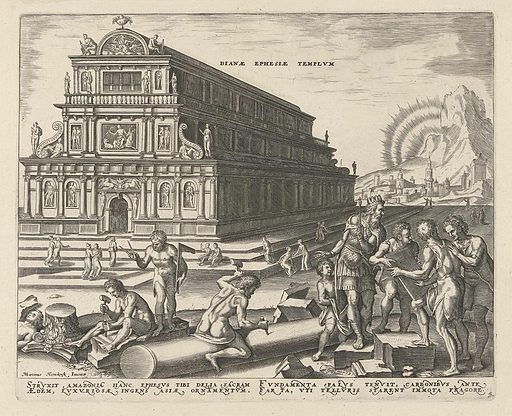

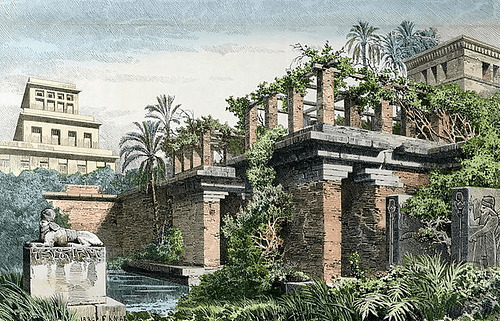
#polls#seven wonders#seven wonders of the world#colossus of rhodes#temple of artemis at ephesus#statue of zeus at olympia#mausoleum of halicarnassus#lighthouse of alexandria#hanging gardens of babylon
86 notes
·
View notes
Text
Paul's Seven Wonders of the Modern Word - The Taco
The first seven wonders were the Seven Wonders of the Ancient World*. They were called they were: seven of them, were wonders, and were around during the times of the ancient world. Presumably there were wonders around hundreds of millions of years ago. The world back then teemed with nothing more than the odd virus colony. Unfortunately, the ancient virus never left any written record. And if…

View On WordPress
#Colossus of Rhodes#finest ingredients#Great Pyramid of Giza#hanging gardens of Babylon#Lighthouse of Alexandria#Mausoleum of Halicarnassus#of the Ancient World#of the moder world#Paul De Lancey#seven wonders#statue of Zeus at Olympia#taco#temple of Artemis#virus#written record
0 notes
Text

Statue of Zeus at Olympia by Roy Krenkel
#zeus#olympia#statue#art#roy krenkel#ancient world#seven wonders#antiquity#europe#european#history#ancient greek#ancient greece#greek#greece#mythology#religion#religious#religious art#architecture#statues#classical antiquity
415 notes
·
View notes
Text
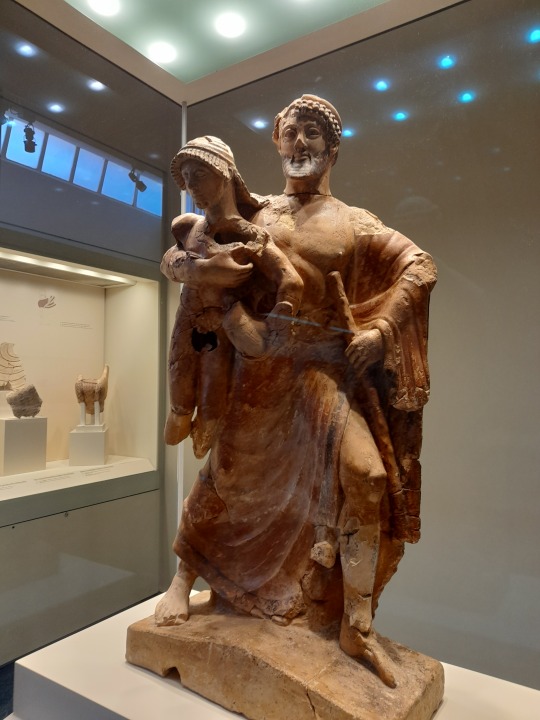
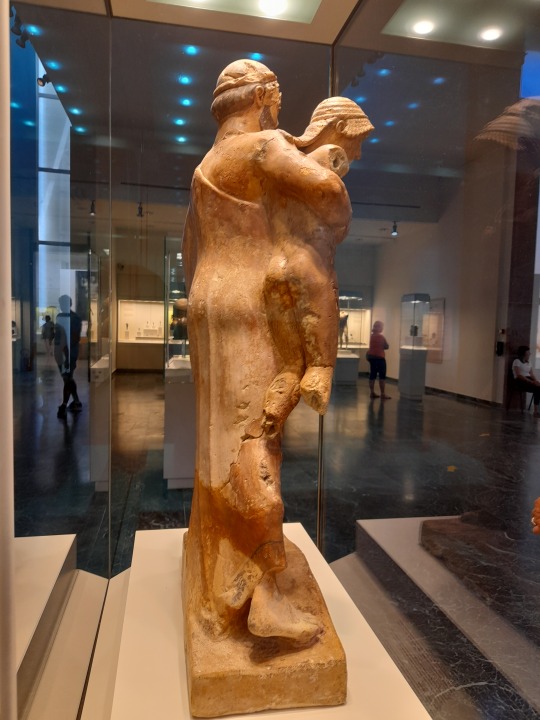

Terracotta statue of Zeus carrying Ganymede to Olympus from the archeological museum of Olympia, Greece.
74 notes
·
View notes
Text
The Greek sculptor, Phidias, created some of the ancient world’s most famous colossal statues. While they were lost to history long ago, attempts are being made to reconstruct them.
17 notes
·
View notes
Text
A Strange Afterlife
@shieldagentnatasharomanoff
The last thing Tony remembered was fire in his veins as Pepper's face faded away in front of him. He figured he was probably dying, and being an atheist - no matter how many gods he'd ever met in person - Tony hadn't expected anything else after that.
But there was something. He found himself standing in the middle of a dirt and cobblestone road, surrounded by wood and stucco houses and people who were passing by on their own business but stopping to stare at the strange man in red and gold armor who'd appeared in their midst. The people were short, dressed in light, shapeless clothing much better suited for the hot sun than Tony's armor and sweats. It reminded him of something, but he didn't think what it was until he raised his head to look at the mountain looming over him.
It was not so much a mountain as a steep-sided plateau, and on top he could see structures that included a large Greek temple. This time he recognized the place immediately - he'd been there before. That was the acropolis of Athens, with the Parthenon. Except that the last time Tony had been there, the Parthenon was a ruin that had been blown up sometime in the seventeenth century. Now it was whole and shining in the afternoon light.
"Well, that's different," said Tony, tapping the arc reactor to get rid of his armor. He pulled his sweatshirt off, too, and tied it around his waist before starting towards the acropolis. There was no particular reason why, it was just the only destination that presented itself, and at least from up there he could get the lie of the rest of the land. As places to find yourself after dying, ancient Greece might not be so bad. It was probably just a hallucination anyway.
#shieldagentnatasharomanoff#i honestly spend less time playing the game than just wandering around the locations#hell yeah the erechtheon#aw yeah gonna look in all the treasuries at delphi#statue of zeus at olympia sign me up gonna fuckin climb that bad boy
2 notes
·
View notes
Text
7 Wonders of BL
1 Colossus of Rhodes MaxTul

2 Great Pyramid of Giza Thailand

3 Hanging Gardens of Babylon BL

(what, like I’d let that one slide, whatcha take me for?)
4 Statue of Zeus at Olympia Bangkok

5 Temple of Artemis at Ephesus Taipei


6 Mausoleum at Halicarnassus GMMTV

7 Lighthouse of Alexandria Vietnam

Some of you will get the jokes... some of you will only get the thirst.
That’s okay too.
Before you ask, here’s the pulls:
Together with Me
Manner of Death
KinnPorsche
Step by Step
Love is Science?
He’s Coming To Me
Mr Cinderella
(source)
#thai bl#vietnamese bl#taiwanese bl#7 wonders of bl#Together with Me#MaxTul#Manner of Death#Great Sapol#KinnPorsche#VegasPete#Step by Step the series#man trisanu#Love is Science?#Mark Ouwen#Lin Yu#He’s Coming To Me#Mr Cinderella#Bah Vinh#random thirst post#i wonder if tumblr will even serve this one?
408 notes
·
View notes
Text
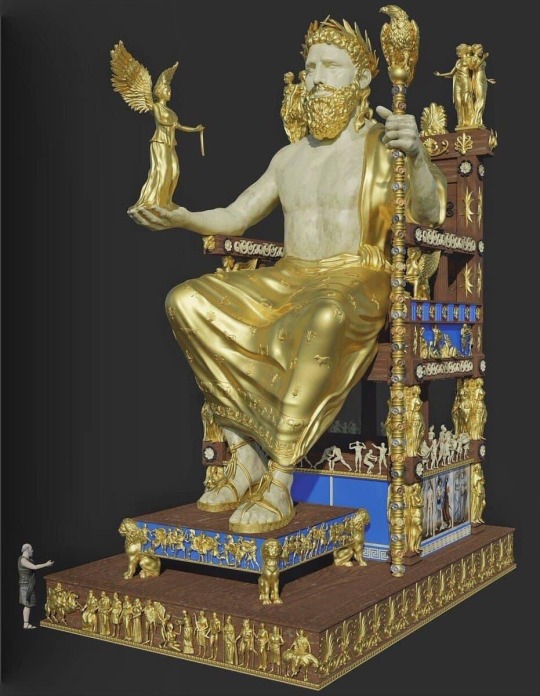
The monumental Statue of Zeus at Olympia in Greece was one of the Seven Wonders of the Ancient World. Created in the 430s BCE under the supervision of the master Greek sculptor Phidias, the huge ivory and gold statue was bigger even than that of Athena in the Parthenon. Worshipped by pilgrims from across the Mediterranean, the statue inspired countless imitations and defined the standard representation of Zeus in Greek and Roman art in sculpture, on coins, pottery, and gemstones. Lost in later Roman times following its removal to Constantinople, Phidias' masterpiece captivated the ancient world for 1,000 years and was the must-see sight for anyone who attended the ancient Olympic Games.
The statue of mighty Zeus was over 12.4 m (41 ft) high and represented the god seated on a throne. It was bigger even than Phidias' Athena Parthenos in Athens. The Zeus statue, like Athena, was chryselephantine, that is a combination of gold and ivory over a wooden core, with the god's skin (face, torso, arms and legs) being in ivory and his beard, robes, and staff rendered in brilliant gold, applied in hammered sheets. Fine details were picked out using a wide variety of materials: silver, copper, glass (for the decorative lilies of the god's robes), ebony, enamel, paint, and jewels. The clay moulds discovered in Phidias' workshop for a similar statue suggest that it was first erected there in pieces - the size of the workshop is exactly the same dimensions as the inner cella of the temple - and then reassembled at its final destination. The wooden core could not have been fully sculpted or the moulds would have been unnecessary to shape the outer gold pieces.
Zeus' throne - made using ivory, ebony, and gold, and encrusted with glass and gems - was embellished with relief sculpture depicting a wide range of figures from Greek mythology, many of which were considered the offspring of Zeus. There are the Graces (Charites), the Seasons (Horae), various Nikes, sphinxes, Amazons, and the children of Niobe. The screens between the legs of the throne were painted by Phidias' brother Panaenus (Panainos) and depicted the Labours of Hercules, Achilles with Penthesilea, Hippodamia with Sterope, Salamis, and scenes of Greece. The god rested his feet upon a footstool which was decorated with a battle scene involving Theseus fighting Amazons (Amazonomachy).
209 notes
·
View notes
Note
why was Zeus and Hera’s marriage so unstable and did ancient people like ancient writers think it was unstable?
There isn't a definitive answer for why their marriage is portrayed this way, only theories and interpretations. You'll probably often see their dynamic claimed to represent the forced merging between a matriarchal culture (Prehellenic Greece) and a patriarchal one (the Indo-European invaders), the subordination of a powerful, originally independent goddess by the newcomer god against whose authority she revolts and all that, but of course this is just speculation and the idea of matriarchal prehistory is very controversial.
Another possibility (and this seems quite plausible) is that Hera was an important regional goddess who was not very harmoniously integrated into the Panhellenic Olympian pantheon. Whereas in her main center of worship she was the dominant power, as wife in a patriarchal marriage she has to give way to Zeus. Here's an excerpt from Jennifer Larson's Understanding Greek Religion:
„Interestingly, the diction of Homeric Greek preserves the unexpected formula posis Hērēs (“husband of Hera”) for Zeus, which leaves the impression that Hera is the more important of the two partners. With respect to the religion of everyday social exchange, she was undoubtedly more important to the people in the Argolid peninsula. It was Hera, not Zeus, with whom they interacted most, and on whom they depended for prosperity and victory. Homer repeatedly makes Hera and the other gods acknowledge the overwhelming power of Zeus, yet cultic arrangements in Greek cities did not reflect his supreme status in myth. Instead, nearly the opposite was the case: although all honored him, relatively few poleis made Zeus their patron deity. His early cults were typically situated in remote rural mountaintops and valleys, and he was also worshiped in domestic contexts. The supreme power of Zeus was recognized at Olympia and Nemea, two Peloponnesian sanctuaries which served during the Geometric period as regional gathering places. In the Argolid itself, however, there is little early evidence for the worship of Zeus in his own right. Instead, he seems to have been regarded as the “husband of Hera”: lead plaques depicting Hera and Zeus as a divine couple have been found in three of her eastern Peloponnesian sanctuaries.
This state of affairs created a logical conflict between the mythic, Panhellenic understanding of Zeus as ruler of all the gods and the cultic situation in the Argolid, where the preeminent deity was Hera. Homer and his predecessors were not men of Argos or Mycenae, and they were more concerned with the narrative than the devotional impact of epic song. They responded to the discrepancy between myth and cult by fashioning a theology: Hera, the ferocious partisan of the invading Greeks, comes into constant conflict with Zeus, who sees the bigger picture because he is responsible for the cosmos as a whole. Time and time again, Zeus must bully his deceitful, headstrong wife into submission. … Homer’s portrait of Hera as a disobedient, shrewish wife is a poetic construct fashioned in the service of Panhellenic epic, which insists on the primacy of Zeus. Epic depicts the gods as members of an Olympian family with Zeus as a patriarchal husband, a narrative strategy which requires that Hera, like Shakespeare’s formidable Katharina, be tamed. … The unyielding character of Hera in epic is a product of Homeric artistry, but it also reflects certain characteristics of regional “great goddesses,” such as Argive Hera and Spartan Orthia, who were by turns nurturing and bloodthirsty.”
Did the ancients themselves see their marriage as unstable? Well, they could and did criticize the way the gods were portrayed by the poets, and that definitely included Zeus and Hera. For example, there seem to have been several attempts to interpret Zeus hanging Hera from her wrists with anvils attached to her feet allegorically, suggesting that it was considered quite problematic; „Next, the audacity of those who fasten on Homer finds fault with the binding of Hera. They think they have here rich material for their impious rage against him”, Heraclitus says, after which he proceeds to provide an allegorical interpretation. Aristarchus athetized the lines from Iliad 14 in which Zeus lists several of his sexual unions with women and goddesses to Hera, one of the reasons being that it is inappropriate for the situation and would serve to repel Hera more than anything. And of course there is also Plato, who takes issue with several incidents where the gods behave in a questionable way: „But Hera's fetterings by her son and the hurling out of heaven of Hephaistos by his father when he was trying to save his mother from a beating, and the battles of the gods in Homer's verse are things that we must not admit into our city either wrought in allegory or without allegory. For the young are not able to distinguish what is and what is not allegory.” Lucian of Samosata found much material to satyrize in the marriage of Zeus and Hera, first and foremost his cheating and her negative reaction to it. He outright has her say that she is neglected by Zeus, has Leto mock her over the fact that being the wife of Zeus and sharing his throne will provide her little satisfaction when he'll be off cheating again and she'll be crying about it, + several interactions between Hera and Zeus that are far from loving and harmonious.
We of course can't know what the average ancient Greek thought about their relationship in myth, but clearly there were people who found some aspects of it questionable.
27 notes
·
View notes
Text
Time Travel Question 18: Ancient History VIII and Earlier
These Questions are the result of suggestions from the previous iteration.
This category may include suggestions made too late to fall into the correct grouping.
Please add new suggestions below if you have them for future consideration.
#Bering Straight Land Bridge#Ancient Israel#Stempunk#Ancient Egypt#Alexandria#Automata#Time Travel#Paleolithic#Neolithic#Domestication#History of Food#Gaul#The Temple of Artemis#Ancient World#Olympia#Halicarnassus#Malaysia
66 notes
·
View notes
Text
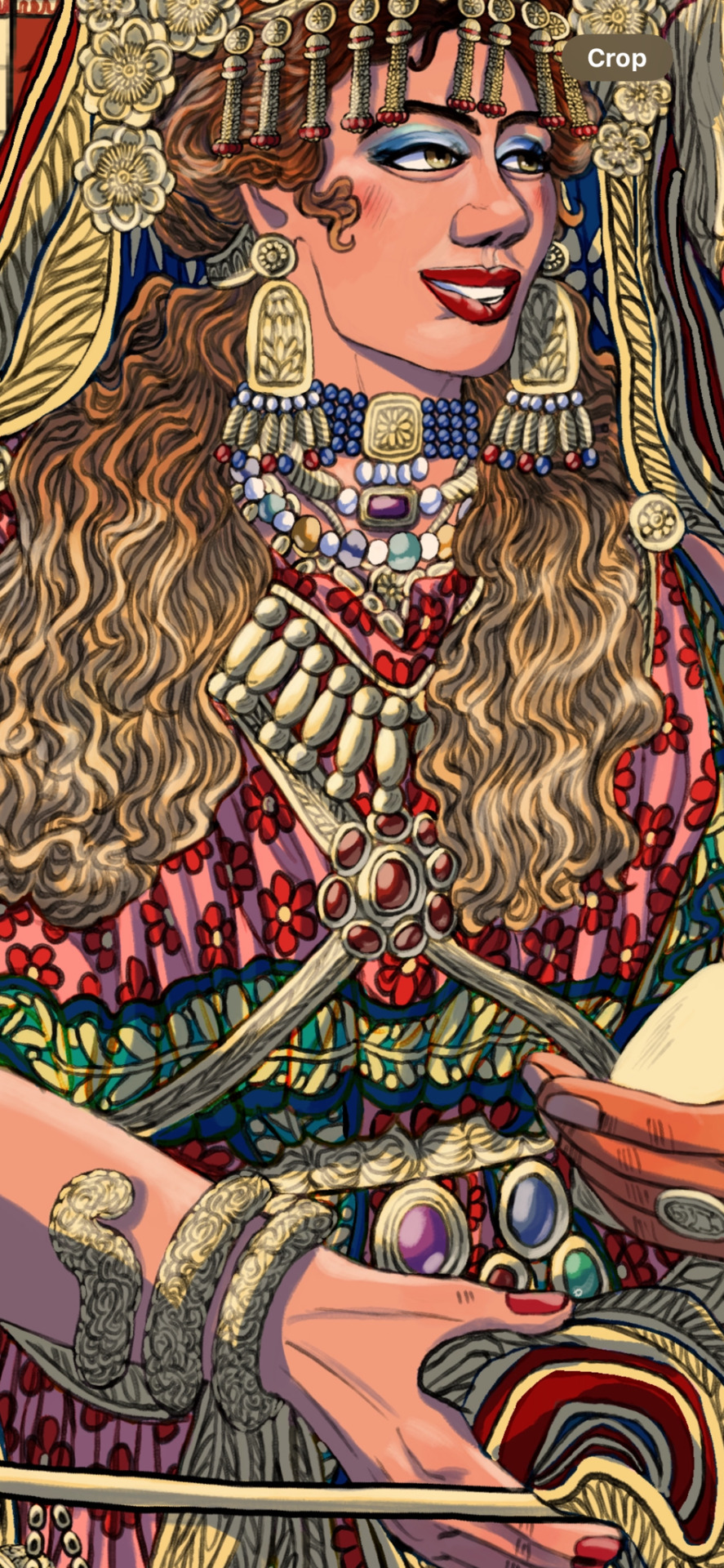
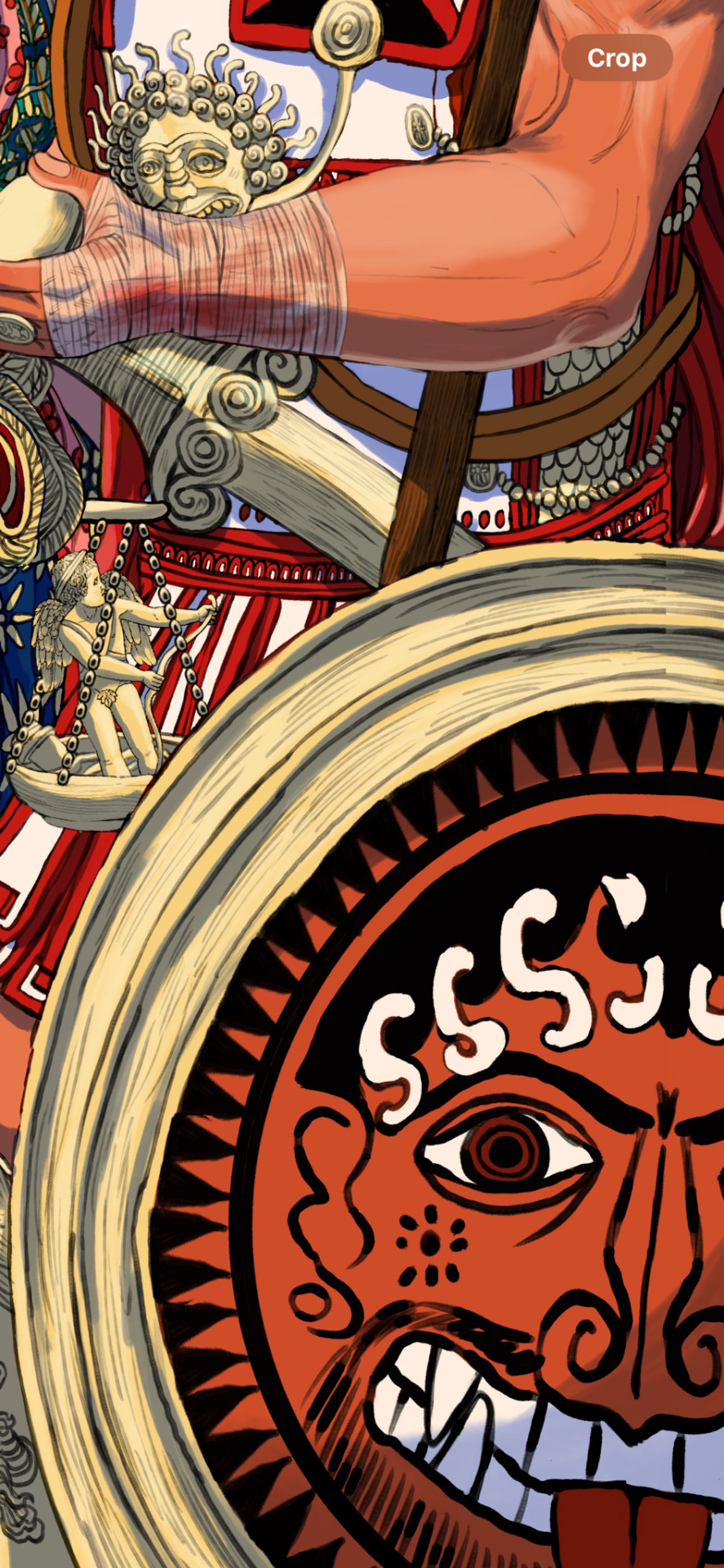


Closeup details of an Ares illustration entry that I made for my Sing O Muse zine contribution last year. Ares, in my version, is often hanging out with Aphrodite and the Graces, Hera + her daughters, and Poseidon the most, either for his warrior bodyguard duty or just running casual errands in his home. Zine is out now, so you better check them out and grab them while you can since they are still piping hot from fresh printing !!!!
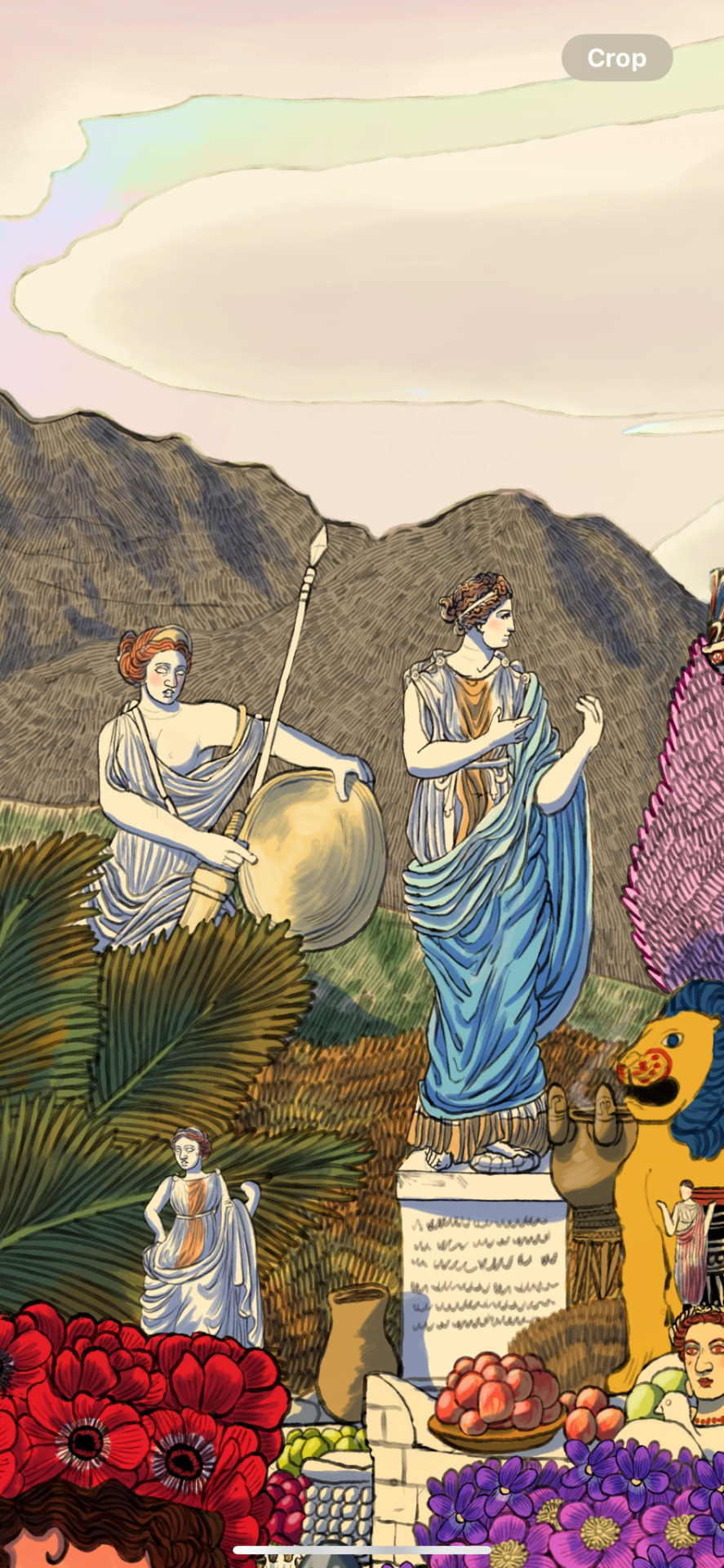

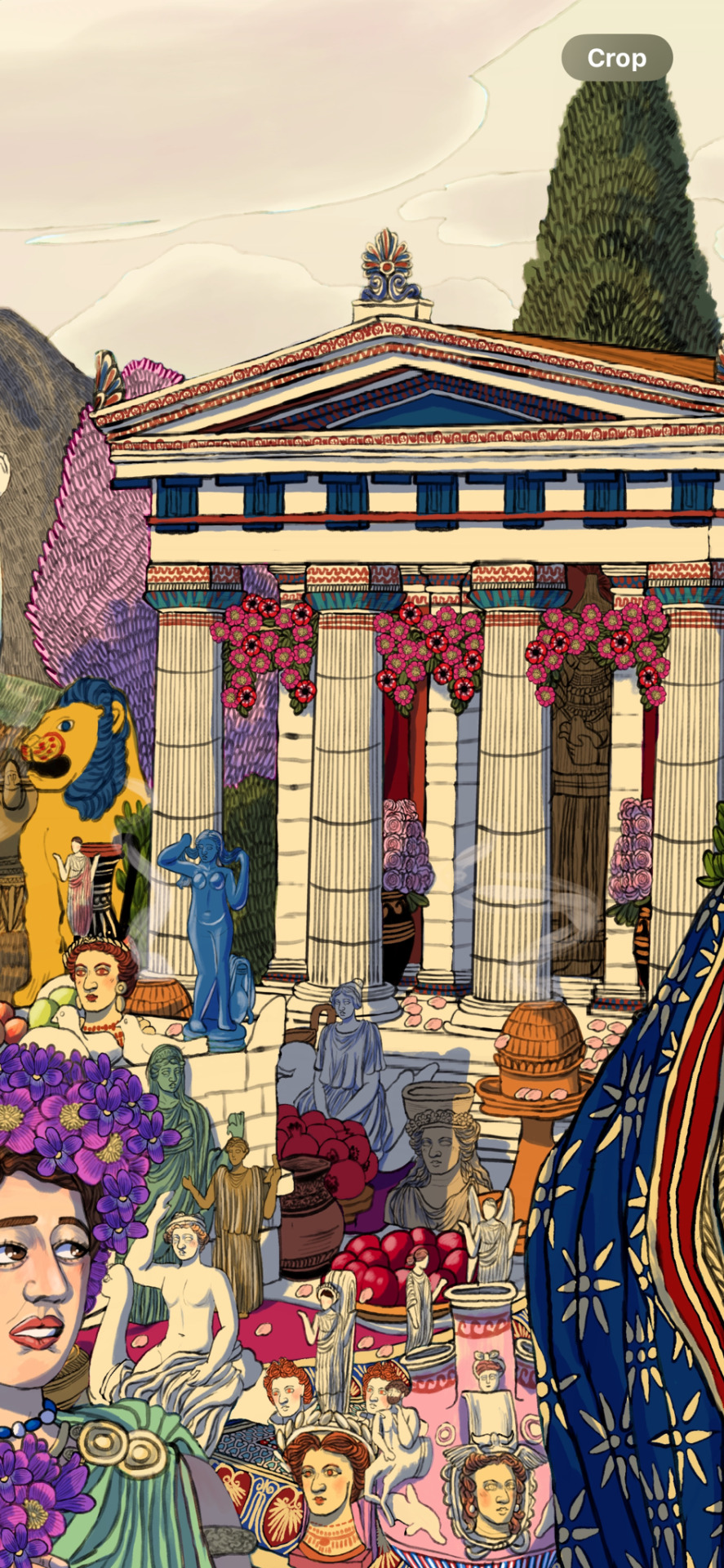
The temple background was that of Aphrodite Ourania in Kythera, one of the oldest structures dedicated to her located in mainland Greece dated from the 6th century BC, which was later converted into Agioi Anargyroi church (St. Cosmas & Damian) during Byzantine times.
According to legend, Aphrodite was born from the sea foam stranding to the seashores of Alvemonas Bay of Kythera first before arriving in Paphos, Cyprus. Aphrodite Ourania, as in her “heavenly love” aspect was depicted as an armed warrior goddess within this modest temple right here, and there are still fully preserved walls + niches within the current ruined building along with its Doric columns!!!!

Over on the sight of the divine couple is another chryselephantine statue of Aphrodite Ourania herself, with her foot standing on a tortoise. Made out of gold & ivory, with black stone eyes and carved by the famed Phidias who was known for the Athena Parthenos and Athena Promachos in the Parthenon, Athens; as well as the statue of Zeus of Olympia. (I knew that this statue of Aphrodite Ourania would later be transferred to Elis, in the further northern region of Arcadia, but I still loved it to be standing there, tbh.)
#ares#aphrodite#ancient greek#my art#mars#venus#greek mythology#sing o muse#homeric hymns#the olympians#olympian gods#temple of aphrodite#kythira#avlemonas bay
13 notes
·
View notes
Photo


The Heptagram of the Seven DaysThe Heptagram of the Seven days is a particularly interesting way to view the order of the celestial bodies. If reading clockwise from the top-most symbol, it is the order of the planets from the Geo-centric Qabalistic model: Saturn, Jupiter, Mars, Sol, Venus, Mercury, Luna. If read following the lines of the Heptagram, one gets the days of the week: Saturday (Saturn’s Day), Sunday (Sun’s Day), Monday (Moon’s Day), Tuesday (Tiw’s Day, Norse War God), Wednesday (Wodin’s Day), Thursday (Thor’s Day), Friday (Frigga’s Day, Norse Love God.) Crowley attributes this realization to Frater Deo Duce Comite Ferro, S.L. MacGregor Mathers. This is one of two different kinds of Heptagrams. This version is known as 7/3 Heptagram, as each line connects the planet that is three planets away. The other version of the Heptagram is called a 7/2 Heptagram, and is used for the Seal of A∴A∴.
DANCE OF THE SEVEN VEILS
“The seven spheres attached to the seven planets symbolize seven principles, seven different states of matter and spirit, seven different worlds which each man and each humanity must pass through in their evolution across a solar system.” – The Wisdom of Egypt7 the sum of my name YOSRA HARZALLAH7 Daughters of Atlas7 Stages of Alchemy - Calcination, Dissolution, Separation, Conjunction, Fermentation, Distillation, Coagulation.7 Hermetic principles - Mentalism, Correspondence, Vibration, Polarity, Rhythm, Cause and Effect, Gender.7 Notes of the musical scale.7 Systems of Symbolism - numbers, geometrical figures, letters, words, magic, alchemy, astrology.7 Rays of Light - Red, Orange, Yellow, Green, Blue, Purple, Violet.7 Planets of Antiquity - Moon, Mercury, Venus, Sun, Mars, Jupiter, and Saturn.7 Churches of Asia Minor7 Personality Types - Lunar, Mercurial, Venusian, Solar, Martial, Jovial, Saturnine.7 Days of Week - Sunday, Monday, Tuesday, Wednesday, Thursday, Friday, Saturday.7 Arch Angels - Michael, Gabriel, Raphael, Uriel, Chamuel, Jophiel, and Zadkiel.7 Metals of Antiquity - Lead, Tin, Iron, Copper, Mercury, Silver, Gold.7 Chakras - Muladhara, Svadhisthana, Manipura, Anahata, Vishuddha, Ajna, Sahasrara.7 Emotive Spheres of Kabbalah7 Seals.7 Root Races, each with 7 sub-races7 Days of Creation7 Virtues - Faith, Hope, Charity, Fortitude, Justice, Prudence, Temperance.7 Vices - Pride, Envy, Anger, Sloth/dejection, Avarice, Gluttony, Lust.7 Stages of Man - the infant, the school-boy, the lover, the soldier, the judge, the elderly man, the senile one.7 Liberal Arts - grammar, rhetoric, logic, arithmetic, music, geometry, and astronomy - the first three in the Trivium, the latter four in the Quadrivium.7 Wonders of the Ancient World - Pyramids of Egypt, Hanging Gardens of Babylon, Statue of Zeus at Olympia, Temple of Artemis at Ephesus, Mausoleum of King Mausolus at Halicarnassus, Colossus of Rhodes, Pharos Lighthouse at Alexandria.7 Headed Hydra7 Headed Lion7 Headed Dragon7 Headed Serpent7 Seas - Arctic, Antarctic, North and South Pacific, North and South Atlantic and the Indian Ocean.7 Continents - North America, South America, Africa, Europe, Asia, Australia and Antarctica.7 Seven Sisters of the Pleiades star system.7 Parts to the embryo - Amnion, Chorionic Villi, Spinal Cord, Heart, Brain, Umbilical Cord, Yolk Sac.7 Parts of the body - Head, Thorax, Abdomen, Two Arms, Two Legs.7 Major Organs - Brain, Heart, Lungs, Stomach, Intestines, Liver, and Pancreas.7 Glands - Pineal, Pituitary, Thyroid, Thymus, Adrenal, Lyden and Gonad.7 Divisions to the brain - Cerebrum, Cerebellum, Pons Varolii, Medulla Oblongatta, Corpus Callosum, Spinal Cord, Meninges.7 Parts to the inner ear - Vestibule, Auditory Canal, Tympanic Membrane, Ossicles, Semi-circular Canal, Cochlea, Membranous Labyrinth.7 Parts to the retina - Cornea, Aqueous Humor, Lens, Vitreous Humor, Retina, Sclera, Iris.7 Cavities to the heart - Right and Left Ventricle, Right and Left Atrium, Tricuspid Valve, Mitral Valve, Septum.7 Body systems - Muscular, Skeletal, Nervous, Digestive, Respiratory, Excretory, Circulatory.7 Bodily functions - Respiration, Circulation, Assimilation, Excretion, Reproduction, Sensation, Reaction.7 Levels in the Periodic Table of the Elements.…and, of course, the 7 Dwarfs.“The Principles of Truth are Seven; he who knows these, understandingly, possesses the Magic Key before whose touch all the Doors of the Temple fly open.” –The Kybalion“And God created seven Heavens and seven Earths, and through them all, descends His Command.” – scriptural translation
195 notes
·
View notes
Note
Hello! Dropping by to say that I’ve been loving how much attention DwtL has been getting and I’m devouring the new Cambridge Companion edition on ATG lol. Super interesting stuff, and it’s explained in a way that makes sense to someone like me who has no official humanities research background—and thank you for always entertaining our questions :)
A little unrelated to ATG, and more so an overall question. Something that has always intrigued me was the dichotomy between revered goddesses in Ancient Greek religious practices, and the way the society treated its own women. (Athena = goddess of intelligence, among others = super derogatory attitudes toward women’s intellectual capacity?) Not limited to Greece only, of course: so many ancient cultures worshipped female deities, but suppressed their own women. I’m wondering if you had any theories for why this phenomenon persisted, because it’s been something I was mystified by for a while now.
First, thanks. I'm glad that more people seem to be discovering the novels, and apparently liking them well enough. And YES, the Companion is a great new addition. I'm especially pleased that Cambridge decided to price it such that more people can actually afford to buy it, besides academic libraries. That was one big problem with the prior one (2003) from Brill.
Down the decades (centuries) a lot of folks have asked your question! It’s one reason I point out that the status of goddesses (and heroines) shouldn’t be taken as indicative of the actual power or even agency of women in ancient Greece—although that also varied from place to place.
Time for my periodic reminder: ancient Greece wasn’t a single country. It was a series of independent city-states. Each of those belonged to one of three major (and a couple minor) linguistic dialects with their own unique social and religious traditions.
E.g., there’s not really such a thing as “ancient Greece.” That was a post-Persian War construct that owed more to propaganda than reality.* “The Greeks” fought each other more than they fought anybody else until quite late.
It’s very easy, especially at an intro-level, to accidentally conflate Athens with ancient Greece. Partly, it’s an evidence problem. Most of our evidence about ancient Greece comes from ancient Athens.
When it comes to women, this results in a particularly negative picture of female agency in pre-Hellenistic/pre-Roman Greece. Women in Athens were particularly disempowered, both (te) legally and (kai) actually. Let me explain that last.
Legal power = what a society ostensibly allows
Agency = what actually prevails, positively or negatively, in contrast to actual power
It’s important to recognize this distinction. Down the millennia, women have got rather good at circumventing legal restrictions via “subversive” power. We all know this. It’s why someone like Olympias got slammed by the likes of Plutarch. She didn’t “know her place.” Never mind that her legal “place” in Epiros versus Macedon versus various southern Greek city-states varied. Women in ancient Greece often found ways to exercise power outside legal bounds. Rather than “illegal,” we should refer to this as “alegal.”
Yet supposed legal power can be deceptive the other way too: it my imply more power than women actually have…just ask any rape survivor who has to testify in court in the face her reputation being smeared by the defense.
So, all that laid out as a basis, let’s look at mortal women vs. immortals.
Next point of definition: immortals are immortals not because they’re “good” or should be imitated but because 1) they don’t die (although some can be killed), and 2) they’re more powerful than mortals. They don’t play by the same rules and aren’t held to the same standards of “proper” behavior. Afterall, Zeus married two of his own sisters (Demeter, then Hera).
Religious festivals were also known for allowing “transgressive” behavior normally restricted in regular/normal/profane time. So, for instance, during the annual Thesmophoria, married women left their families to camp out together and form their own “city-state,” even electing temporary magistrates to run this 3-day city-of-women within the larger polis. Young girls on the cusp of their periods in Attika went camping to play the bear for Artemis at Brauron (and apparently other places). Etc.
Religious festival served an important function in ancient Greece, providing much-needed interruptions to the drudgery of daily life. In antiquity, relatively few cultures had regular “breaks” like weekends. Rather, religious festivals provided this function; these might range from a half-day break to something a week long or more. Perhaps it’s no surprise, then, that divine behavior was considered exceptional. The sacred (numinous) was sharply divided from the profane (normal).
Additionally, it’s no surprise if farming societies, or any society with a strong connection to the earth, should develop powerful goddesses. There are, of course, male fertility deities, but Mother Nature/Mother Earth is nearly universal. The only religion I can think of where the earth is male and the sky is female is ancient Egypt. (Recall Isis’s starry robe!) There are probably more, but it’s not exactly typical.
I’m not getting into the much-fraught debate about why women’s power in most historical societies has been less than men’s. Theories breed like hydra heads. But it is pretty well recognized that in societies where women had some control over their fertility (when to have babies, and how many), as well as independent control over their finances, their social status was higher. Beyond that, the best we can say is that which societies developed higher status for women depended on a constellation of factors.
Ironically—and perhaps counterintuitively—these factors didn’t involve the relative importance of female deities. Perhaps for reasons outlined above. Not all societies saw their divinities as living in ways mortals should imitate.
In her groundbreaking Goddesses, Whores, Wives, and Slaves—one of the first books to really look at the role of women in ancient Greece—Sarah Pomeroy herself noted the problem with the status of goddesses versus the status of flesh-and-blood women. Discussion of women in ancient Greece has grown more nuanced since. For a great little overview, let me recommend Lin Foxhall’s Studying Gender in Classical Antiquity (2013). I love this book because it looks at more than just texts (which is Pomeroy’s more traditional, Classical approach). Foxhall uses a lot of archaeology, which, when it comes to women (and slaves, for that matter) really fleshes out our perspectives. There’s also the more recent Exploring Gender Diversity in the Ancient World (Allison Surtees, Jennifer Dyer eds., 2020). It’s one of those great “collections” where you get the advantage of multiple voices contributing. It’s more about gender variance than women, but I quite like it. Last, let me also recommend Helen Morales’ Antigone Rising, which looks at Classical myth today, or reception studies. Morales is one of those Classicists who (like me) thinks it important to engage with the wider public, but she’s rather more prominent and respected. 😉
So, there’s some good, reliable literature to get you off the ground too, most intended for a non-specialist audience. (I’d tackle the first two and last before trying the collection, which is more specialized with some linguistic discussions, etc.)
——-
* Even in the Greco-Persian Wars, more Greek city-states didn’t fight the Persians than did!
#asks#Greek women vs Greek goddesses#women in ancient Greece#why is the status of Greek women so low when they also worshiped goddesses?#ancient Greece#Classics#religion and the status of women
8 notes
·
View notes
Text
#classical art#history#7 wonders#the seven wonders of the ancient world#pyramid of giza#colossus of rhodes#alexandria#babylon#olympus#greek#roman#jude.poll
24 notes
·
View notes
Text
I’m aware the Ancient ones aren’t all around anymore, but this is fiction so they can see them if they want to. They’re always finding expired things laying around in PJO.
For reference, the original seven: the Great Pyramid of Giza, the Colossus of Rhodes, the Lighthouse of Alexandria, the Mausoleum at Halicarnassus, the Temple of Artemis, the Statue of Zeus at Olympia, and the Hanging Gardens of Babylon.
The modern seven: Chichen Itza, Christ the Redeemer, the Great Wall of China, Machu Picchu, Petra, the Taj Mahal, and the Colosseum.
#all opinions welcome#give me ideas#feeling pretty giddy about this one#want it to be super cute#fic poll#pjo fandom#pjo verse#percy jackson#percy jackson and the olympians#pjo hoo#heroes of olympus#pjo stuff#pjo text post#pjo boys#jasico#jasico bromance#jasico fic#nico di angelo#jason grace#nico and jason#jason and nico#fandom polls#pjo polls#pjo fic#hoo fic#percy jackson fanfiction#heroes of Olympus fanfic#fanfic poll
21 notes
·
View notes
Text
So fuck the myth of the Library of Alexandria and it being burned/destroyed.
I'm MUCH more upset about the Palace of Lausus burning.
Imagine a building with the statue of Zeus from Olympia, one of the wonders of the ancient world, the Aphrodite of Knidos, the Hera of Samos, THE Athena from the Parthenon and innumerable other major, important works of Greek sculpture.
Then it burns down and they are all fucking destroyed in 475AD
Crying myself to sleep
#classicism#classical history#greek art#zeus#olympia#aphrodite#hera#lausos#kind of glad lausos died 30 years earlier#imagine being alive for that watching it all burn
12 notes
·
View notes